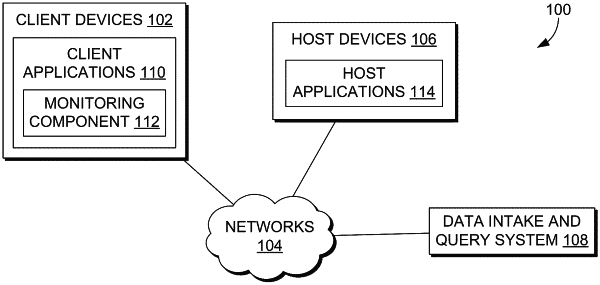| CPC G06F 11/0757 (2013.01) [G06F 11/079 (2013.01); G06F 11/328 (2013.01); G06F 11/3452 (2013.01); G06F 11/3476 (2013.01); G06F 2201/80 (2013.01); H04L 43/0852 (2013.01); H04L 43/10 (2013.01)] | 18 Claims |

|
1. A computer-implemented method, comprising:
receiving, by a first instance of a data intake and query system, latency data that indicates latency states of a plurality of second instances of the data intake and query system, wherein the first instance and the plurality of second instances are components of the data intake and query system, wherein an individual latency state of an individual second instance of the plurality of second instances indicates an ingestion latency of an event data by the individual second instance from when the individual second instance receives the event data to when the event data is processed by the individual second instance;
determining, by the first instance, an overall latency state of the first instance based, at least in part, on determining a cumulative number or percentage of the first instance and the plurality of second instances having one or more particular latency states, and determining whether the cumulative number or percentage is equal to or exceeds a threshold; and
presenting, by the first instance, the overall latency state of the first instance;
wherein presenting the overall latency state of the first instance includes causing a client device to display a graphical user interface that includes a selectable representation of the first instance that, when selected, a reason for the overall latency state of the first instance is provided;
wherein the determined overall latency state of the first instance adopts an individual latency state of one of the second instances having a highest latency state among the plurality of second instances, where the one of the second instances having the highest latency state is an instance that has a highest amount of ingestion latency among the plurality of second instances.
|